There’s something incredibly satisfying about baking your own bread, especially when it’s as wholesome and fuss-free as this flourless oatmeal kefir bread. This isn’t your average white loaf. It’s gluten-free, made without any flour, and packed with natural fiber and gut-friendly probiotics thanks to kefir. The result? A hearty, nourishing loaf with a tender crumb and just enough chew — perfect for slicing, toasting, and topping any way you like.
Whether you’re avoiding refined flour, looking for a healthier bread alternative, or just want something simple and satisfying, this oatmeal bread hits the mark. You don’t need yeast, special flours, or complicated steps. In fact, everything comes together in one bowl and bakes in under 40 minutes. Let’s break it down.
Why This Flourless Oatmeal Bread Deserves a Spot in Your Recipe Rotation
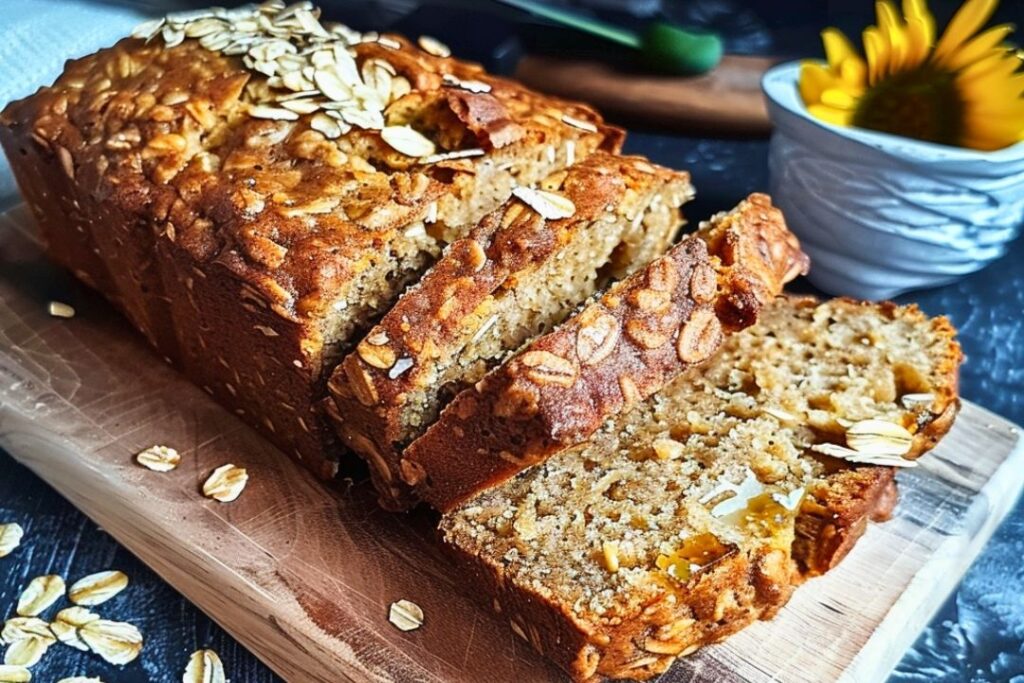
Unlike traditional bread recipes, this one relies entirely on rolled oats — no all-purpose or whole wheat flour needed. Ground oats become the base, absorbing moisture from the kefir and eggs to create a batter-like dough that bakes into a structured loaf.
It’s also:
- Gluten-free (just make sure to use certified gluten-free oats)
- High in fiber, with complex carbs that keep you fuller longer
- No added sugar or refined ingredients
- Gut-friendly, thanks to the live cultures in kefir
- Naturally low in fat, but still satisfying
It’s an ideal everyday bread — nutritious without being heavy, neutral enough for both sweet and savory pairings.
Key Ingredients and Why They Work
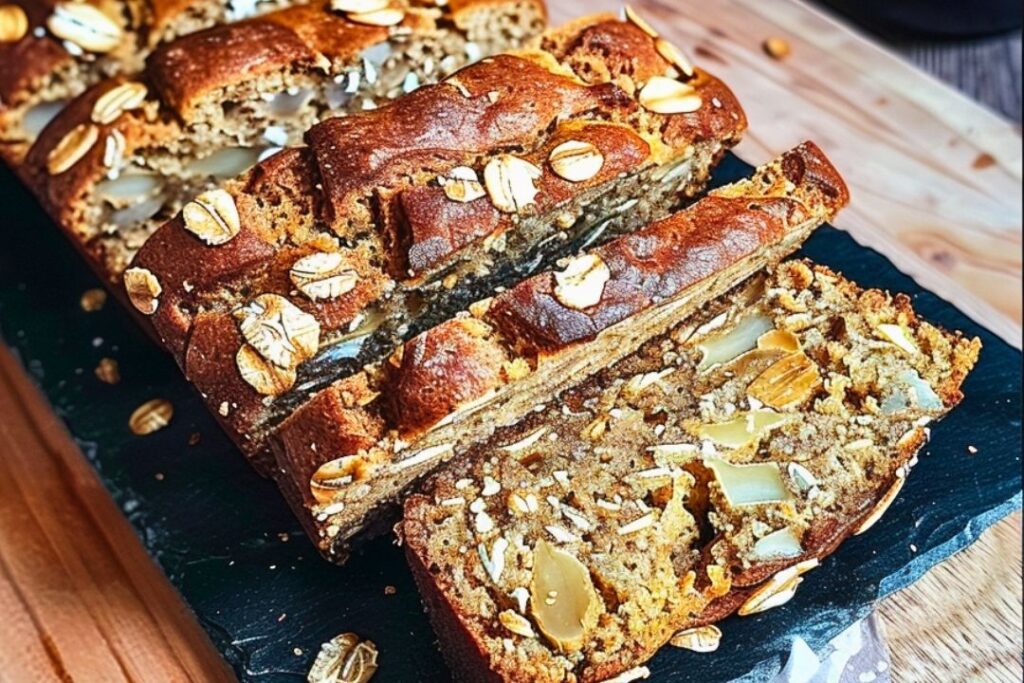
Rolled Oats
The backbone of this recipe, rolled oats are blitzed into a coarse flour. They offer natural structure, a mild nutty flavor, and essential whole-grain benefits like soluble fiber (hello, heart health).
Kefir
This fermented dairy drink acts as a tangy, probiotic-rich liquid base. It reacts with the leaveners to create lift, while also bringing moisture and a soft crumb texture. Plus, it supports digestion and gut health.
Eggs
Essential for structure and stability in flourless baking. The eggs bind everything together and contribute to a light, sponge-like texture.
Apple Cider Vinegar
Just a small amount gives a subtle tang and works with baking soda to help the bread rise. It also complements the kefir for a layered acidity that deepens flavor.
Leavening Agents
Baking soda and baking powder work together to ensure the loaf rises just enough. No yeast, no proofing time — just mix and bake.
Step-by-Step Method That Simplifies Homemade Bread
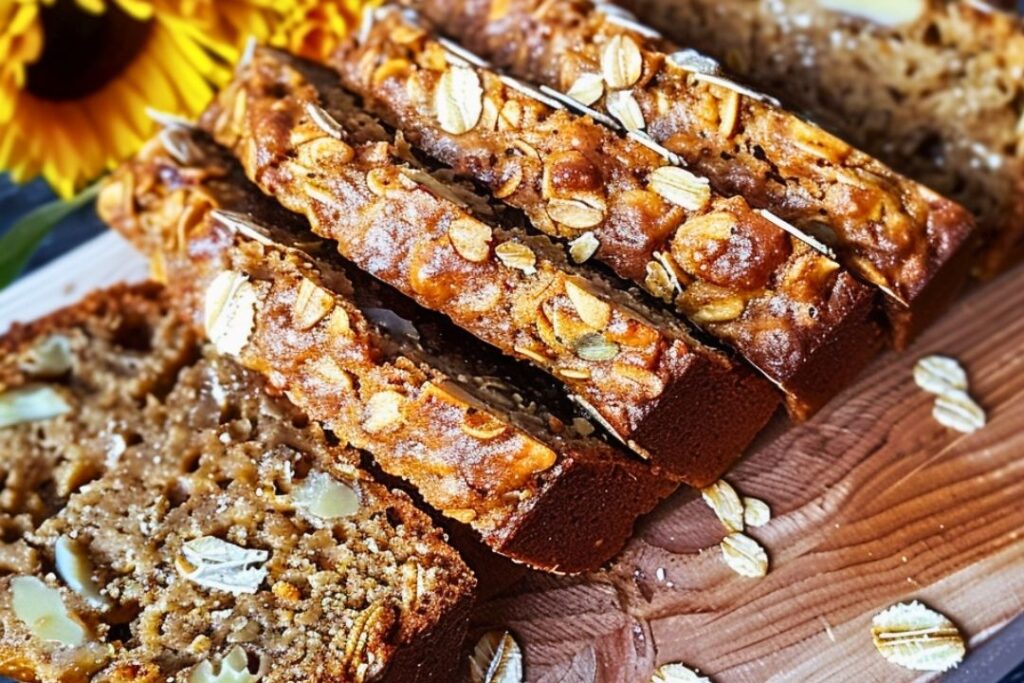
1. Prepare the Oats
Start by pulsing your rolled oats in a food processor or high-speed blender. You’re aiming for a flour-like texture — not completely powdery, but not coarse either. Think rustic oat flour with a bit of texture for bite.
2. Combine Dry Ingredients
In a large mixing bowl, combine your homemade oat flour with salt, baking soda, and baking powder. Stir well to evenly distribute the leaveners — this ensures a consistent rise.
3. Mix Wet Ingredients
In a separate bowl or directly into the dry mixture, add kefir, eggs, and apple cider vinegar. Stir gently until everything is fully incorporated. The batter will be looser than traditional dough — somewhere between a thick pancake batter and muffin mix.
4. Transfer to Loaf Pan
Lightly grease a standard loaf pan (about 8×4 inches) with olive oil or cooking spray. Pour in the batter and use a spatula to smooth the top. A gentle tap on the counter helps release air bubbles.
5. Bake and Cool
Bake in a preheated 350°F oven for 30–35 minutes. You’re looking for a golden crust and a firm top that springs back lightly to the touch. Let the loaf cool in the pan for 10 minutes, then transfer to a wire rack. Cooling fully before slicing prevents a gummy texture.
Tips for Success
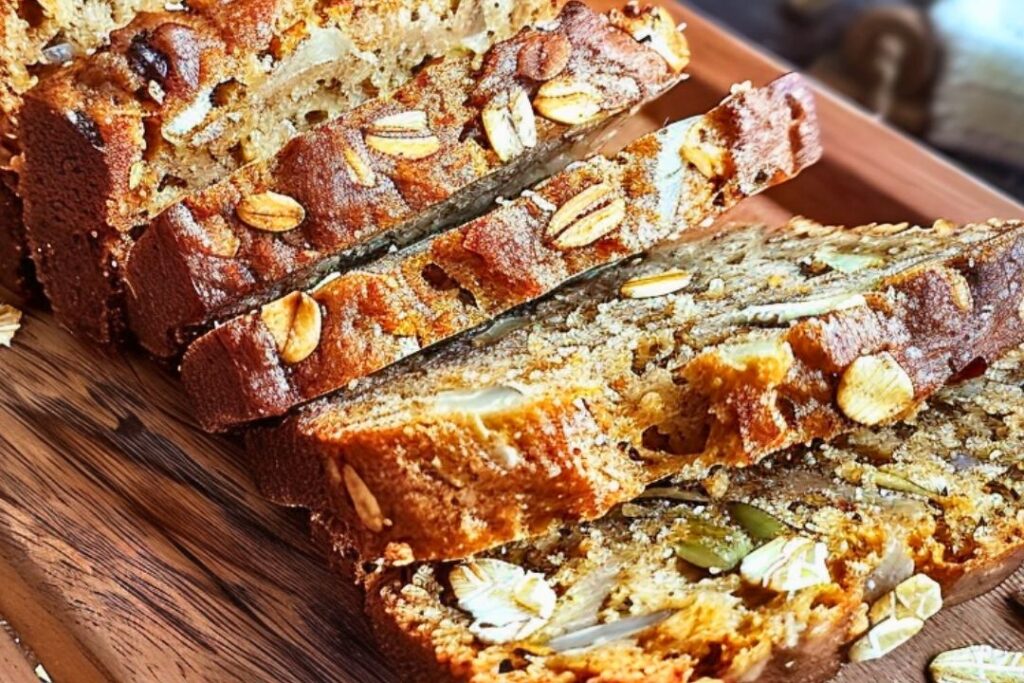
- Don’t skip the food processor step. Whole oats won’t work the same as processed oat flour — blending is essential for structure.
- Use room-temperature ingredients. Cold kefir or eggs can inhibit the rise and create an uneven bake.
- Check doneness with a toothpick. Insert it in the center — if it comes out clean or with a few crumbs, it’s done.
- Let it rest. Freshly baked, flourless bread is fragile while hot. Allowing it to cool improves both texture and flavor.
How to Store and Serve Oatmeal Kefir Bread
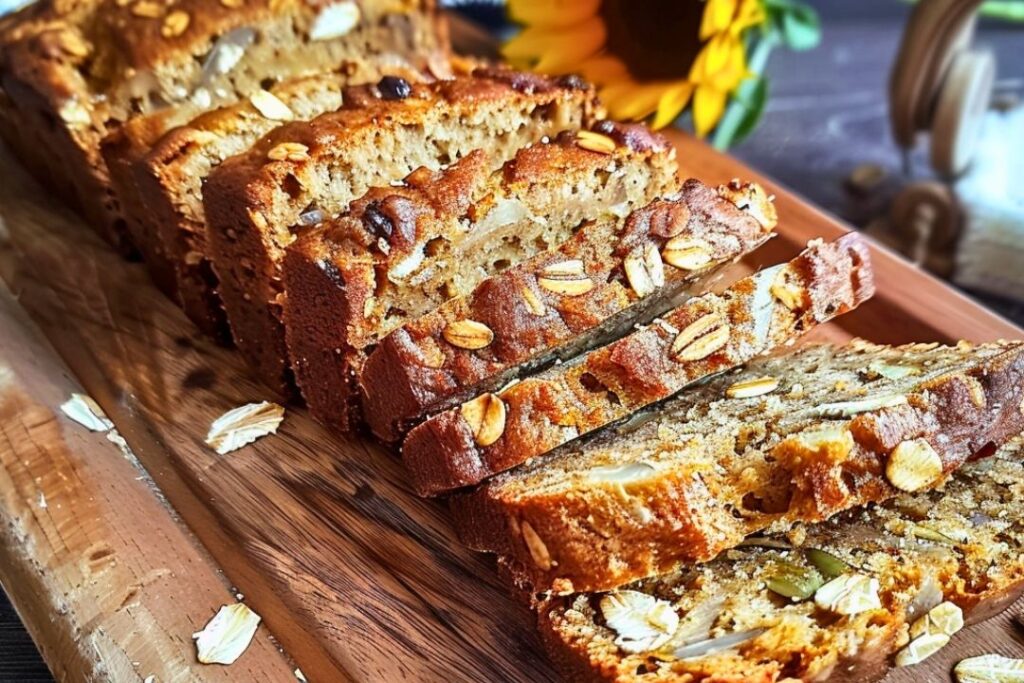
Storage
Wrap the cooled loaf tightly in parchment or foil and keep it at room temperature for up to 2 days. For longer storage, refrigerate for up to 5 days, or freeze individual slices in a sealed bag for up to 3 months.
Serving Ideas
- Savory: Top with avocado, eggs, or hummus for a hearty breakfast or light lunch.
- Sweet: Spread with almond butter, sliced bananas, or a drizzle of honey.
- Toasted: This bread toasts beautifully. A little crisp on the edges makes it perfect for jam, butter, or cheese.
Is This Bread Keto or Low Carb?
While it’s gluten-free and flourless, this bread isn’t considered keto or low carb, as oats are a source of complex carbohydrates. That said, it’s a better-for-you option compared to refined white bread or store-bought gluten-free loaves that often contain starches and fillers.
Substitutions and Variations
- Dairy-free? Use a plant-based kefir or unsweetened plain yogurt alternative.
- Egg-free? You could try flax eggs (1 tbsp ground flax + 2.5 tbsp water per egg), though the texture may be more dense.
- Add-ins: Stir in herbs, seeds (like sunflower or flax), or spices (think cinnamon for a sweet version or rosemary for savory) for custom flavor.
Why You’ll Keep Coming Back to This Recipe
This bread is perfect for meal prep, quick breakfasts, or anyone seeking a simple, honest alternative to processed loaves. It’s not just about what’s left out (flour, yeast, sugar) — it’s about what’s built in: real ingredients that fuel your body and satisfy your hunger.
Every slice is a reminder that baking doesn’t need to be complicated to be rewarding. So whether you’re new to flourless baking or just looking for a better homemade bread, this oatmeal kefir loaf is worth bookmarking.
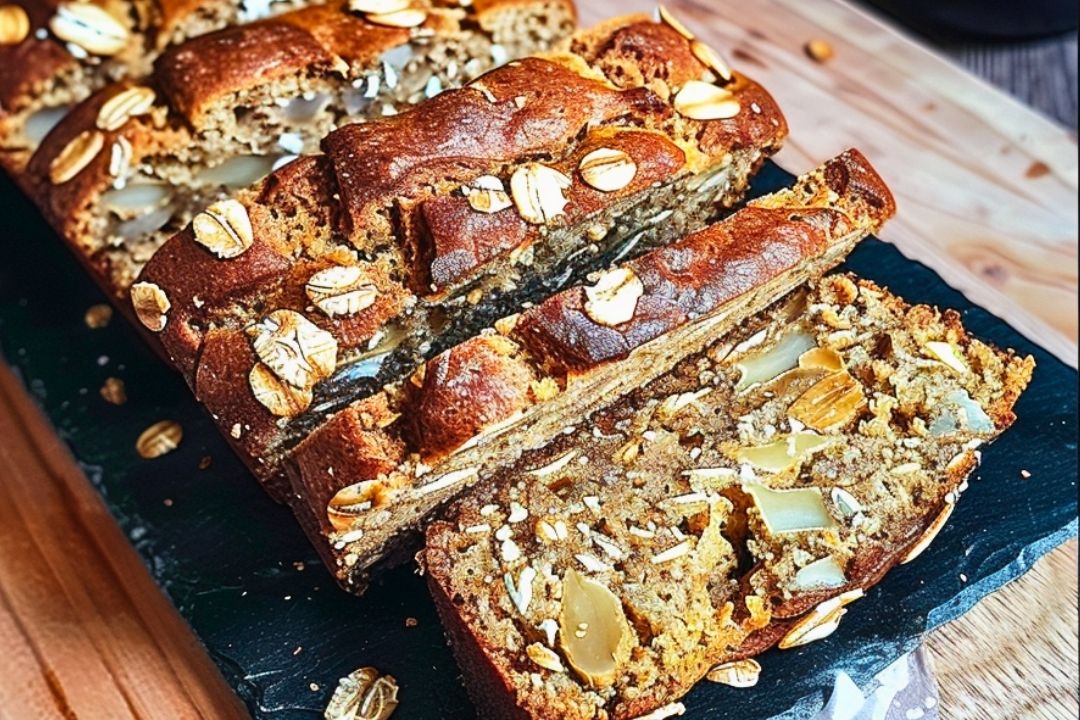
Flourless Oatmeal Kefir Bread
Ingredients
Method
- Preheat the oven to 350°F (175°C). Lightly grease a standard loaf pan with olive oil or non-stick spray.
- Pulse the rolled oats in a food processor or blender until they reach a flour-like consistency.
- In a large mixing bowl, combine the processed oat flour, salt, baking powder, and baking soda. Mix well.
- Add the kefir, eggs, and apple cider vinegar to the dry ingredients. Stir until fully combined. The batter should be thick and uniform.
- Pour the batter into the prepared loaf pan and smooth the top with a spatula.
- Bake for 30–35 minutes or until the top is golden and a toothpick inserted in the center comes out clean.
- Remove from the oven and let the bread cool in the pan for 10 minutes. Transfer to a wire rack to cool completely before slicing.
Notes
- Use certified gluten-free oats if you are sensitive to gluten.
- Make sure the kefir is plain and unsweetened for best results.
- Let the bread cool completely before slicing to avoid a gummy texture.
- Store in the fridge for up to 5 days or freeze for longer storage.


Leave a Reply